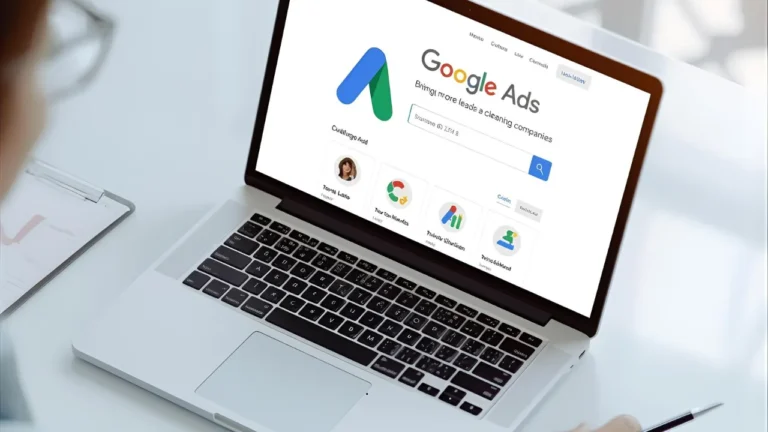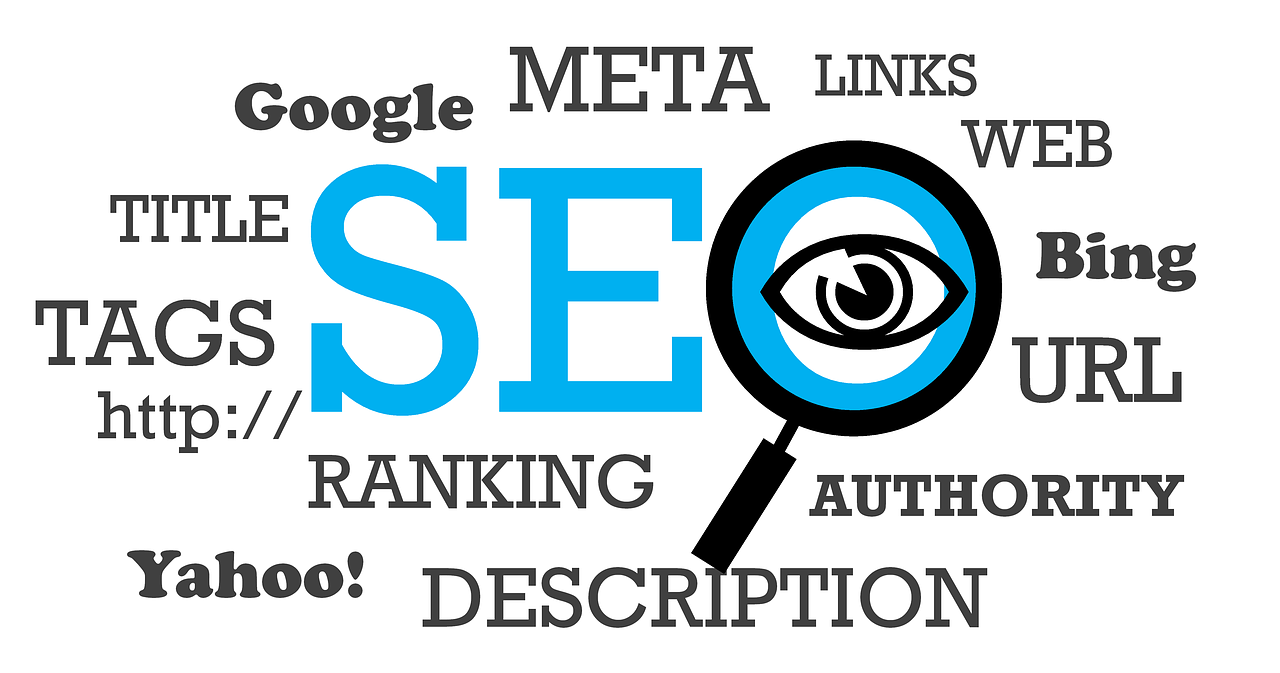Single Blog
How Google Ads Bring More Leads to Cleaning Companies?
September 15, 2025
Aslam miah

If you run a cleaning business, you’ve probably noticed one big pain point: leads. Some weeks your phone’s blowing up, and other weeks…
Word of mouth helps, SEO’s great in the long run, but when you need consistent, high-quality leads, nothing quite matches the speed and precision of Google Ads.
Now, I know what you might be thinking. “Aren’t ads expensive? Don’t they just eat up my budget?”
Well, yes and no.
They can get pricey if you’re winging it, but when you set them up right, Google Ads can deliver a steady stream of jobs at a cost that makes sense.
Let’s walk through why it works so well for cleaning companies, and how to structure campaigns.
Why Google Ads Work So Well for Cleaning Companies?
Cleaning services are a local, high-intent business. People don’t browse for cleaners the way they do for new shoes or recipes.
They search when they actually need you. Someone types “house cleaner near me” or “office cleaning service in Chicago” because they want to book right now. That’s gold.
Unlike social media ads, which aim to convince people they need cleaning, Google Ads allow you to appear when they’re already searching. It’s intent-driven, and that’s why it works.
A report from WordStream found that the average conversion rate for cleaning and maintenance services in Google Ads is around 5.3%.
That’s higher than most other industries. And when campaigns are well-structured, you can see conversion rates climb even higher. It is closer to 7–10%.
Imagine 100 people clicking your ad and 7–10 of them becoming leads. That’s a strong funnel.
And let’s not forget speed. SEO can take months to pay off. With ads, you could literally start showing up at the top of page one tomorrow.
How Google Ads Bring More Leads to Cleaning Companies?
Setting Up Campaigns That Actually Work
This is where most cleaning companies go wrong. They’ll launch a campaign targeting “cleaning services” as a keyword and let it run.
The problem?
That’s like putting a billboard in the middle of the ocean. You’re going to waste clicks on people looking for cleaning jobs, DIY tips, or even janitorial franchises.
The secret is structuring campaigns around services and locations. Here is how to do it-
Separate Ad Groups/Campaigns for Each Service
- House cleaning, move-out cleaning, and commercial cleaning should each have their own ad group or campaign.
- Reason: Messaging differs,move-out clients care about speed and deposit refunds, office managers want reliability and contracts, etc.
- Lumping them together makes ads too generic and less effective.
Keyword Match Types
- Exact Match: Use for high-intent phrases like “move-out cleaning Chicago” to reach ready-to-buy clients.
- Phrase Match: Allows some flexibility while still keeping targeting relevant.
- Negative Keywords: Prevent wasteful clicks with terms like “jobs,” “careers,” “DIY,” “free,” and “franchise.”
Geo-Targeting
- Set radius targeting around your city or specific ZIP codes to avoid leads outside your service area.
Ad Scheduling
- Show ads only during business hours or when staff is available to answer calls.
- Avoid wasted leads by preventing ads from showing when no one can respond.
- Set radius targeting around your city or specific ZIP codes to avoid leads outside your service area.
Why Landing Pages Make or Break Your Ads
Here’s a mistake I see all the time: businesses run ads and send traffic straight to their homepage. Big no-no. Your homepage is like a lobby.
It’s got lots of doors and distractions. A landing page is a straight path. One door, one action.
Let’s say you’re running ads for “move-out cleaning in Dallas.” Don’t dump them on your homepage. Send them to a page that screams “Move-Out Cleaning in Dallas. Book Today.” On that page,
show before-and-after photos, highlight deposit guarantees, and have a form that takes 30 seconds to fill out.
The best landing pages have:
- A clear headline with the service + city (“Fast, Affordable Move-Out Cleaning in Dallas”)
- Trust elements (reviews, star ratings, maybe a badge like “background-checked cleaners”)
- A simple form (name, phone, email, service type, and preferred date is plenty)
- Click-to-call buttons (especially important for mobile traffic — which is usually over 70% in local services)
According to Unbounce, landing pages with a single, clear call-to-action can boost conversions by up to 202% compared to multi-offer pages. That’s the difference between paying $50 per lead versus $25.
Tracking and Knowing Your Numbers
You can’t manage what you don’t measure. And Google Ads without tracking is like driving blindfolded. At the very least, set up:
- Call tracking (Google’s free forwarding numbers or tools like CallRail).
- Form submissions (track each completed form as a conversion).
- Booked jobs (ideally pipe form/call data into your CRM and mark when a lead becomes a customer).
Here’s a simple formula every cleaning business should know:
Cost Per Lead (CPL) = Ad Spend ÷ Number of Leads
So if you spend $1,000 and generate 40 leads, your CPL is $25. Pretty straightforward. But the real number that matters is cost per booked job. If only 50% of those leads convert into paying customers, your effective cost per job is $50.
Now, compare that to the lifetime value (LTV) of a customer.
For residential cleaning, a one-time booking might be $120, but if you convert them to a bi-weekly recurring client, their annual value could easily hit $1,500–$2,000. Paying $50 to acquire a $1,500 customer? That’s ROI any business would take.
According to Glasshouse Digital, cleaning businesses see cost per lead averages ranging from $20–$100, depending on the service and market size.
That’s a pretty big range. But it shows why tracking and optimizing is critical. You don’t want to sit at the $100 end when you could be closer to $20–$40.
Real Examples of Campaign Results
Let me give you a couple of real-world scenarios to show what’s possible.
One agency case study I saw took a residential cleaning company from a $75 CPL down to $25 just by restructuring their campaigns around service types and cutting wasted keywords (Exposure Ninja case study). That tripled the number of leads they could get for the same ad spend.
Another campaign for a commercial cleaning service focused heavily on geo-targeting and ad scheduling.
They set ads to only run between 7 am and 7 pm, Monday to Friday, when office managers were more likely to call. That small tweak cut their wasted clicks and improved conversion rates by nearly 40%.
The takeaway? Small optimizations can have a massive impact.
What to Expect in Your First 30 Days
So, let’s say you’re starting from scratch. What’s realistic?
Week 1: Audit your website, build service-specific landing pages, and set up campaigns for your top 2–3 services. Don’t overcomplicate it.
Week 2: Add tracking (calls, forms, booked jobs). Launch campaigns with a modest budget — even $500 to test.
Week 3: Review your search terms. Cut out irrelevant keywords and add negatives. Tweak ad copy.
Week 4: Check results. Are you seeing at least 5–10% conversion rates? What’s your CPL? Double down on what’s working.
By the end of the first month, you should have a clear sense of your CPL, conversion rates, and which services bring the best ROI. Then, it’s just about scaling budget into the winning campaigns.
Wrapping It Up
Google Ads aren’t magic, but for cleaning companies, they’re about as close as it gets to a “tap to turn on leads” button. The key is doing it with structure.
It is service-based campaigns, laser-focused keywords, strong landing pages, and proper tracking.
Once you nail those basics, you’ll not only bring in more leads. But you’ll know exactly how much each one costs and how much revenue they generate.
And when you know those numbers? Scaling your business gets a whole lot easier.
"A good digital marketing strategy allows you to reach a wider audience with more personalized messages, helping your business grow in a smarter way."
– Neil Patel

